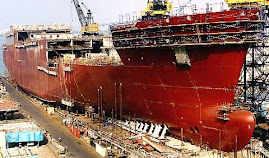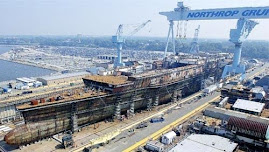in this term i try to share what i think about organization for one contractor. maybe i need critic for.

... Read more!
Shipyard need a marker or loftsman to build the ship. Generally marker and loftsman is the same job in shipyard. Marker or Loftsman is the maker.

Nowadays, ship built by steel. Steel for construction purposes is usually mild steel.
There are some items that should be consider to build a ship, they are about size and type of a ship, material, material equipment, machining material, unit size and weight to be fabricated and erected.
A support vessel usually use semen tank in it's structure, so engineering will prepare the type of blog assembly for this ship.
Usually ship will build with frames as skeleton of the ship.

also we can see a double bottom. The space in between the two bottom is often used as storage tanks for fuel and ballast water.
Bulkhead (bhd) in ship serve several purpose, first increase the structural rigidity
of the vessel, second they divide functional areas in to room and create water tight compartments that can contain water in the case of a hull breanch or other leak.
Some bulkhead and decks are fire resistance rated to achieve compartmentalisation , a passive fire protection measure.




4. Flat bar.
Usually it is 6 M in lenght. many kind of thickness.

5. H-Beam.
H-Beam is the Steel beam seem like letter 'H'.
6. Pipe
Usually is 6 M lenght
7. Bulb Plate .
.
This material you will always see and need to build a ship and you have to know them well if you want to work in shipyard.
 For a new worker in shipyard will find many terminology that maybe new for him. In this posting i would like to tell you about terminology you will find in shipyard.
For a new worker in shipyard will find many terminology that maybe new for him. In this posting i would like to tell you about terminology you will find in shipyard.
.jpg)